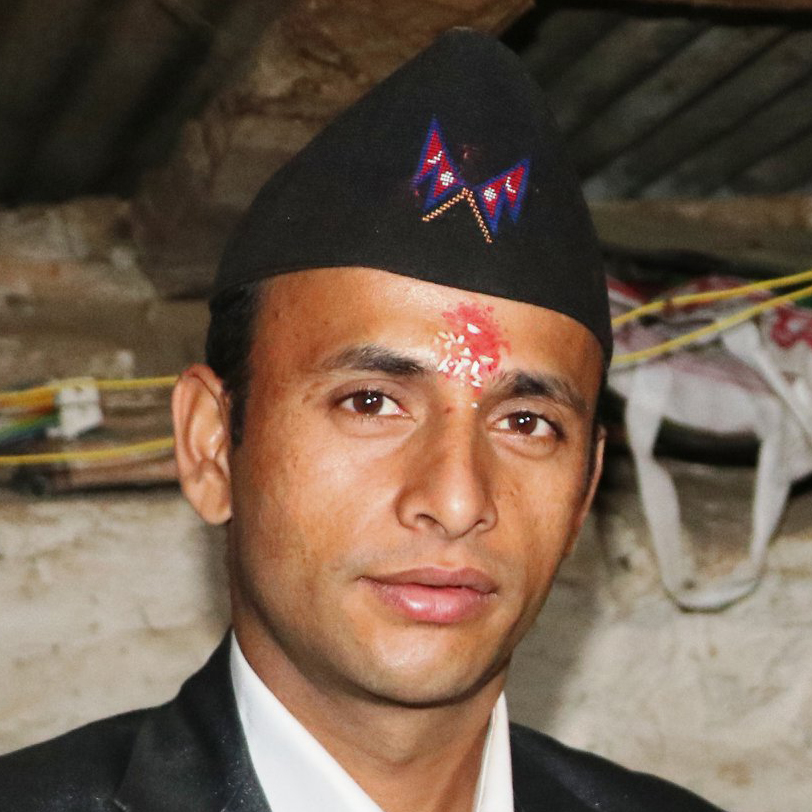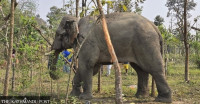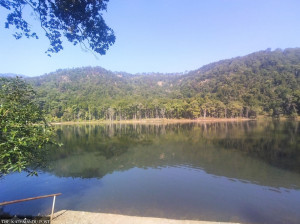Sudurpaschim Province
Darchula shepherds face hardship as track on Nepal side yet to be repaired
Villagers, including those in Chhangru and Tinkar, are forced to use the Indian road to move their cattle.
Manoj Badu
Every year, with the onset of winter, shepherds living in high altitudes of Byas Rural Municipality, in Darchula, descend to the lowlands to avoid extreme cold. When spring arrives, they return to their villages and their fields, gearing up for the plantation season. But due to the lack of roads, even horse tracks, they have to struggle every year to move up and down.
This year is no different. Villagers of the Byas Rural Municipality-1, including Chhangru and Tinkar settlements, have to use the Indian road to move their sheep, mountain goats, mules and horses along with basic needs to the lower part in Byas-2 this winter. They spend two weeks in one place and move to another place one after the other, living a nomadic life.
“We don’t have a way to take our animals downwards on the Nepal side. The floods and landslides damaged the way. We have no alternative to use Indian territory to take animals to the lowlands,” said Narendra Singh Karki, a resident of Byas -2.
“It has been quite difficult for us this winter. We have to get permission from Indian authorities to use their land. Even after receiving permission, the Indian side does not allow us to stay in a place for a long time.”
According to him, the sheep and goats were grazed in the grasslands of Budi in Byas-1 by mid-October in the previous years. Then at the end of the month the sheep and goats were moved to Ghatibagad in Byas-2 through the Nepal side.
About 27 sheep sheds from Duhu Rural Municipality, Naugad Rural Municipality, Byas Rural Municipality and Mahakali Municipality are moved to the lowlands in Budi and Ghatibagad area of Byas-1 every summer.
According to Ram Singh Badal, a shepherd from Katai in Mahakali Municipality-2, they have to face a lot of trouble to bring down their animals due to the lack of track on the Nepal side.
“In the previous years, at this time of the year, we would be able to go down with sheep and goats. But not this year, because there is no road to walk on,” Badal said. “Until last year, people used to come down by reconstructing and repairing the old routes from the Nepal side. However, this time, it was not possible to come due to the broken track from Dopakhe to Dumling in Byas-1 and 2.”
Badal added that it was not possible to repair the old route which was severely damaged by the floods and landslides along the Mahakali river.
In September, Byas Rural Municipality decided to build a horse track to connect Byas and started the work from three places by forming consumer committees. But the track construction has been halted.
Many people in Darchula left their traditional occupation of rearing sheep, mules, horses and other animals due to hardship and lack of a market for their products. “Sheep were reared for wool in the past, but the demand for wool is declining now,” said Ram Thagunna, a sheep farmer from Naugad-3. “The sheep are reared mainly for meat now. Only a few people have been rearing sheep now just to preserve their traditional occupation.”



 8.12°C Kathmandu
8.12°C Kathmandu












